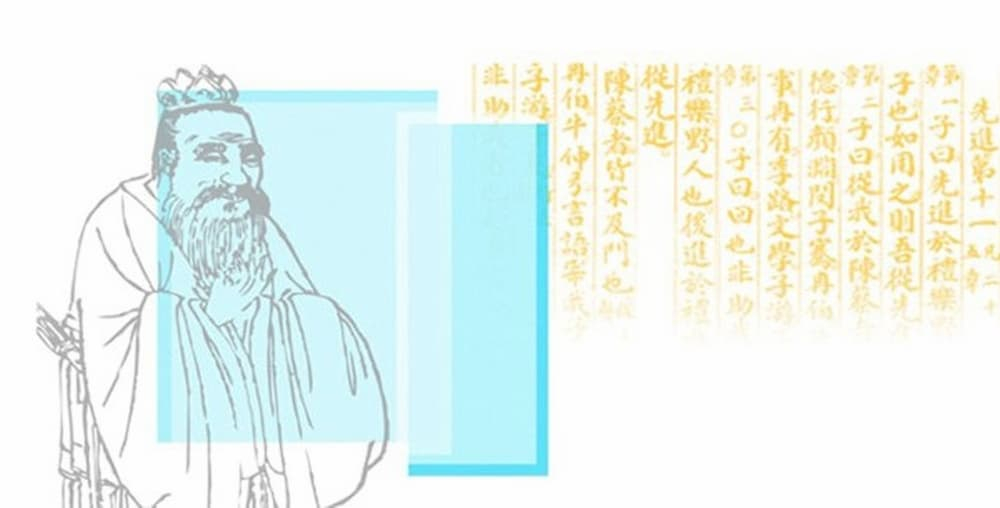
Four Books and Five Classics
Splendid
Chi Culture
Topic
Four Books and Five Classics
The Four Books and Five Classics are at the core of Ruism and were recognized as such during the Southern Song dynasty (1127–1279). The Four Books refers to Lun yu (Analects), Mengzi (Mencius), Da xue (Great learning), and Zhongyong (Doctrine of the mean). The primary content of the Four Books concerns moral cultivation and proper governance.
Lun yu, consisting of twenty “chapters” containing twenty to thirty sections each, was compiled by the disciples of Confucius (551–479 BCE). The rich and lively content of these sections consists of dialogues between Confucius and his students or accounts of his behavior and deeds. These sections present the main tenets of Confucius’ thought: to cherish one’s parents and kin, and respect one’s elders is the underlying principle of law; and to maintain the rites, promote virtue, and attach importance to the enlightened rule brought about by upright rulers and government officials. Ruism, long regarded by China’s rulers as representing orthodox thought, even today exerts a profound influence.
The Mengzi was written by Mengzi (a.k.a. Mencius, 372–289 BCE) in his later years; his disciple Wan Zhang and others helped with the compilation. It has seven chapters each of which is divided into two parts. It mainly recounts how Mengzi persuaded his ruler to implement benevolent government. The book has been influential since the Han dynasty (206 BCE–220 CE) and has been considered a Ruist classic since the Northern Song (960–1127).
The Zhongyong is a Ruist essay written in the pre-Qin era (times before 221 BCE). It is concerned with the doctrine of the mean which states that the highest ethical criterion is impartiality.
The Da xue is also a Ruist essay written in the pre-Qin period. It relates the Ruist principles of government, including the well-known “three guidelines” (illuminate one’s virtue, be close to the people, and rest in the highest good) and the “eight provisions” (study the nature of things, pursue knowledge, show sincerity, rectify the mind, cultivate the self, mange the household, order the state, and bring peace to the world). Da xue was reputedly written by Confucius’s disciple, Zengzi (Zeng Shen, 505–435 BCE). In the Song dynasty, Zhu Xi (1130–1200) canonized Da xue together with Lunyu, Mengzi, and Zhongyong as the Four Books; afterwards, they were the most important Ruist classics.
The Five Classics are Shi jing (Classic of songs), Shu jing or Shang shu (Classic of documents), Li jing (Classic of rites), Yi jing (Classic of changes), and Chunqiu (Spring and autumn annals); they are collectively abbreviated as “Shi, Shu, Li, Yi, Chunqiu.” Previously, Yue jing (Classic of music) was also treated as one of the classics but it was lost. The term “Five Classics” began to be used during the reign of Emperor Wu (r. 141–87 BCE) of the Han dynasty.
Shij ing is the earliest anthology of Chinese poetry; it contains 305 poems written by the nobility and ordinary people from the beginning of the Western Zhou dynasty to the Spring and Autumn period (tenth–sixth centuries bce). The earliest name of the Shi jing was simply shi (poems) and consisted of poems collected and compiled by court officials in charge of music during the Western Zhou period (ca. 1100–771 BCE). The poems in those days were accompanied by music, and were played in court during important ceremonies.
Shu jing, also called Shu (documents), is the earliest collection of documents, including Yu shu (Documents of Yu, “Yu” refers to the era of Yao and Shun), Xia shu (Documents of the Xia), Shang shu (Documents of the Shang), and Zhou shu (Documents of the Zhou). The contents include all political proclamations or declarations. Shu jing were probably compiled during the Spring and Autumn period (770–476 BCE); however, the compiler is unknown.
There are three books on Ruist rites: Yi li (Ceremonies and rites), Li ji (Record of rites), and Zhou li (Rites of Zhou), of which Li ji and Zhou li became Ruist classics. Among these three works, Li ji is the most influential. The ancient rituals that we now know are based on the Yi li and Li ji.
Zhou yi (Changes of the Zhou) includes two sections: Yi jing (Classic of changes) and Yi zhuan (Commentary to the changes). The Yi jing was a divination manual in the Western Zhou, which includes eight trigrams, sixty-four hexagrams, 384 whole and broken lines, hexagram statements and line statements. Yi zhuan consists of commentaries to the Yi jing made by Ruists during the Warring States period (475–221 BCE). Its ten headings are: “Tuan” (Commentary on the decision) parts I and II; “Xiang” (Commentary on the images) parts I and II, “Xi ci” (Great commentary) parts I and II, “Wen yan” (Commentary on the words), “Xu gua” (Sequence of the hexagrams), “Shuo gua” (Explanation of the trigrams), and “Za gua” (Miscellaneous hexagrams).
Chunqiu is a historical chronicle of the Lu state covering a period of 242 years (722–481 BCE), compiled by court historians of the Lu state. Many commentaries to the Chunqiu were written between the Warring States and the Western Han periods, of which the three most well-known are Gongyang zhuan (Gongyang tradition), Guliang zhuan (Guliang tradition), and Zuo zhuan (Zuo tradition).
As the core Ruist works, the Four Books and the Five Classics convey a value system of benevolence, righteousness, propriety, wisdom, and faith as the basis of its moral standard.



